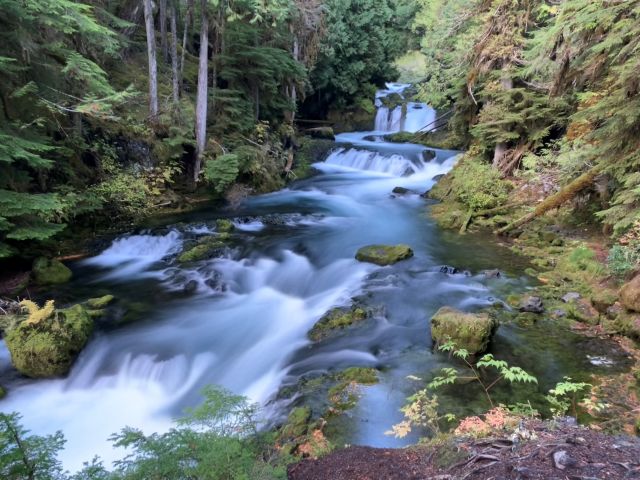Volunteers, heavy labor keep Wanoga Fat Bike Park rolling
Published 6:45 am Friday, April 7, 2023

- COTA volunteers groom the Wanoga Fat Bike Park trail, seen here, a minimum of three times a week.
The fat bike season at Wanoga came to a close on April 1, per the agreement with the U.S. Forest Service.
Thousands of riders cruised this winter on trails managed by a small crew of eight Central Oregon Trail Alliance volunteers donating more than 1,000 hours of their time. To make the Wanoga Fat Bike Park a success, volunteers are specially trained for this unique trail work.
The Wanoga crew, headed by Gary Meyer, gets to work in early fall, before the snow flies. They walk the trail corridors to remove deadfall and refresh ribbons that designate the trails. Ribbons are for groomers to follow the trails, not riders. If a rider gets off the groomed track, they sink in deep snow so they don’t get off course. Grooming machines are maintained, and snow dances commence.
To begin grooming, at least 2 feet of snow must be on the ground. When compacted, snow must have a minimum depth of 1 foot, so machines can go over obstacles and the soil is not disturbed. The grooming team must also play speculative weather forecasters. They will not start grooming if there is a chance of rain or unusually warm temperatures, which can happen into early December most years. The first grooming of the season is to pack the snow and build a base for the trails. The 650-pound snowmobiles pack snow. After it sets up, more snow falls, it’s repacked, sets up, and the cycle continues before trails are ready to be ridden.
Trails are groomed a minimum of three times a week, taking a volunteer four to six hours to groom, depending on conditions. This work is highly physical. Groomers wrestle a heavy snowmobile pulling a grooming implement weighing over 200 pounds. The machine can get stuck if it goes slightly off the track, and volunteers are constantly shifting side to side to counterweight the machine. They have to stand on the high side on cross slopes jumping up and down to make a bench cut and not get bucked off when the machine sinks into air pockets. Many people try out for the groomer team, but even experienced snowmobile enthusiasts find the work to be physically demanding.
COTA owns two drag-grooming implements that are used to manicure the trails. The Snow Blaster has a V-plow on the front, which is used to push light dry snow that won’t pack off trails. The Whale Tail pulls a rake and has wide flaps out the back that smooths snow and builds berms. Raking is needed to pull out footprints made in the trail by users walking in bare boots or tire troughs from riders riding in too-soft conditions or with too high of tire pressure.
A guide to early spring mountain biking in Central Oregon
2023 to-do list: The loop around Mount Bachelor
Teamwork made the dream work at Maston Trail System
Please don’t do these things. It’s a lot of work for the groomers to fix. The rake is also used after a dump of fat, clumpy snow that makes air pockets in the snow. The rake chews up the snow crystals and lays down the snow as a nice frosting. Grooming is best done at sunset to lay down a smooth track that will set up firm as the temperature drops. Each member of the grooming team has a snow type specialty that is finessed to make the trails fun to ride.
The Wanoga Fat Bike Park is the most expensive trail operation of COTA. Maintaining machines, fuel, and replacing trail markers comprise the bulk of funding needs. If you enjoyed the fat biking at Wanoga this winter you can help ensure the operation is funded by dropping a donation in the Iron Ranger at the trailhead or making a donation online and clicking the donation option for winter fat bike trails.
Lastly, a shout out to the other groomers this season: Neil Cusick, Steve Lamerdin, David Leath, John Molloy, Jeremy Rockwell, Chris Scotch, Bill Westhusing and Neil Wrede.






